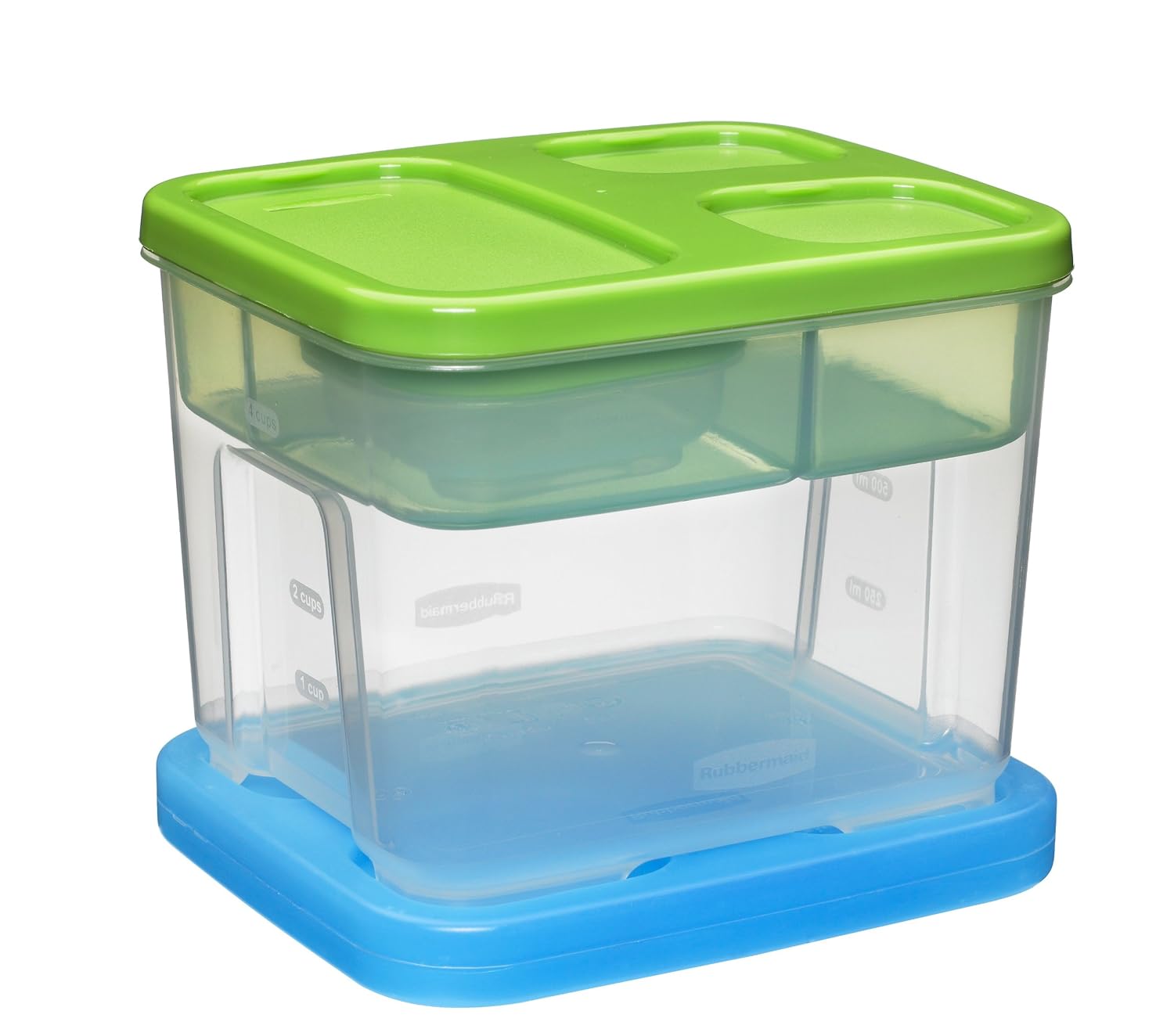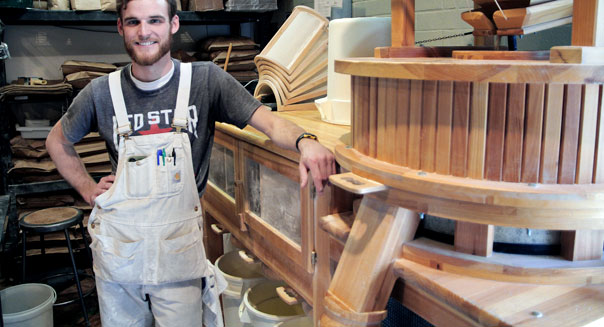Have you ever wondered how you can become one of those people? How they find the time?
The answer: meal planning and prep.
When I read Michael Pollan's In Defense of Food, however, I radically changed almost everything about my diet. I stopped eating most highly-processed foods (anything with ingredients I couldn't pronounce or weren't food) and upped my calories from plant foods.
The truth is, however, this type of eating takes a lot more planning than the old way. Whether you're interested in meal prepping to save time, money, the environment, or your health, here are a few of the ways that I've found to make meal planning and prepping easier.
Get to know yourself as a cook.
If you've never done much cooking, that doesn't mean you can't change the way you eat to include more home-cooked foods. It just means you might need to experiment for awhile. Some people don't really like cooking, and so they'd rather sacrifice one whole day a week (or a month, if they are really organized!) to cooking. I love cooking and so I don't mind doing some cooking mid-week. I also like to buy a lot of fresh produce or use things from the garden, so that means that I go shopping every week (usually twice - one "big shopping" on Sunday, and one mid-week). Think about how much time you want to spend shopping and cooking. If you have a partner or roommate who likes chores that you don't, you might be able to trade some of them for food. I once had a roommate who did all the cleaning if I did all the shopping and cooking for both of us - perfect arrangement.
 |
| I use this meal planning pad from Knock Knock for my planning (then I use the back of last week's sheet for a shopping list). |
Every Sunday, I sit down with my week's calendar and grab a few cookbooks, plus my Kindle so I can Pinterest. I plan breakfast, lunch, and dinner for every day, plus two snacks.
I'm one of those people who doesn't mind repeating foods I like, so I'll usually have the same thing for breakfast for a whole week (lately I've been digging a variation on these goat cheese, turkey and egg cups), and I have a routine for snacks: green smoothie in the morning, a piece of fruit and some almonds or a homemade granola bar for afternoon snack. I make the green smoothies each morning, because I don't like them more than a day old. However, I prep all of the fruits and veggies on Sundays, cutting them up and freezing them.
For lunch, I have three go-tos:
1. Mason jar salads (or other types of salad, like this bulgur blueberry mint salad I ate three days last week). Mason jar salads are great for prepping on the weekend and then popping in your lunch box, because they don't get soggy. This article tells you the basics of how to prep them, and there are a bazillion variations on Pinterest.
2. Homemade soups, stews, or chilis: These are more of a winter fave, when I want something warm. I usually cook these on Sunday, then portion out into individual containers for the week.
3. Dinner leftovers: I often cook one dinner on Sunday, eat it for dinner Sunday, Monday, and Tuesday, then have the leftovers for lunch on Wednesday and cook a new dinner Wednesday night.
If you're planning for kids, Kristin Howerton has awesome ideas for how you can set up a situation for them to make their own lunches. My friends who have smaller kids who can't yet make their own foods, put on their plans lines for their own lunches and snacks, and those for their kiddos. More detailed planning templates for whole families can be found a quick Google away.
On your plan, jot down any notes that are going to impact your time during the week. For example: last week I was planning to make chicken on Thursday night, but I had a work event in the early evening and knew I wouldn't have any energy when I got home. I put on my plan that I needed to make the marinade on Wednesday night, then put the chicken in the marinade before I went to work in the morning Thursday. When I got home, I just had to dump the chicken into the pan and bake it.
Shop smart:
Once you have a plan for all of your meals, go through your plan and write out your shopping list. Then here's the trick: only buy stuff on the list. I can't tell you the number of times I wanted to eat something bad for me, but couldn't because there was nothing in the house. If you need to, you might want to make some rules for yourself -- I tend to live by Pollan's food rules: Eat food, not too much, mostly plants.
For me, the hardest part is not shopping on the weekend, it's the desire for bad stuff during the week when I'm driving around for work. Diet Coke, get thee behind me!! This is the main reason I always have my snacks planned out, so I try not to be hungry.
 Invest in the right tools:
Invest in the right tools:If you're going to meal prep, you can't get around the fact that you need A LOT of containers. Some of my favorites:
Mason jars: They're not just for hipsters! Mason jars are excellent for salads, as I noted above, and for smoothies, soups, or anything somewhat liquidy. The lids go on super-tight, so they aren't easy to spill.
Lunch Blox: I prefer glass containers for foods that I'm going to heat up, but for salads and snacks, Rubbermaid Lunch Blox are awesome. I have a couple of the salad Blox, and they are also great for what I call "snack bento": you can put a bunch of different small snack items, like some tomatoes, carrot sticks, a few Nut Thins, and some hummus all together, and they don't mix with each other because of the divisions in the Blox.
Small containers and spice jars: It's good to have lots of tiny containers -- I use these more than any others, because they help you keep a handle on portions. When you use up a spice, save the jar (wash it thoroughly or the spice flavor will linger), and it can be added as another small container.
Gallon zip bags: While I try not to use many items that aren't reusable, gallon zipper bags are the best for freezing fruit, soups, cooked grains, etc. This is because they can be stacked flat in the freezer, saving space. Depending upon what was inside them, they can be washed and reused before recycling.
Use the whole kitchen.
If you're one of those people who doesn't want to cook more than once a week, make use of the entire kitchen. When you plan, make sure you have one thing you can cook on the stovetop, one for the crockpot, one for the oven, and maybe one for the grill or toaster oven (I cook whole meals in the toaster oven, especially in the summer when I don't want to turn on the real oven). This is especially helpful when you're planning not just for one or two people, but a whole family, where you'll need multiple dinner entrees.
Meal planning and prep can be a shift in thinking about eating, which many of us tend to do on the fly, or turn to convenience foods. However, it also makes life more delicious -- I like to turn up the music when I'm cooking, and it's always wonderful to wake up in the morning knowing that I don't have to think about what to pack in my lunch kit.
Do you have any great tips for meal prepping?

























